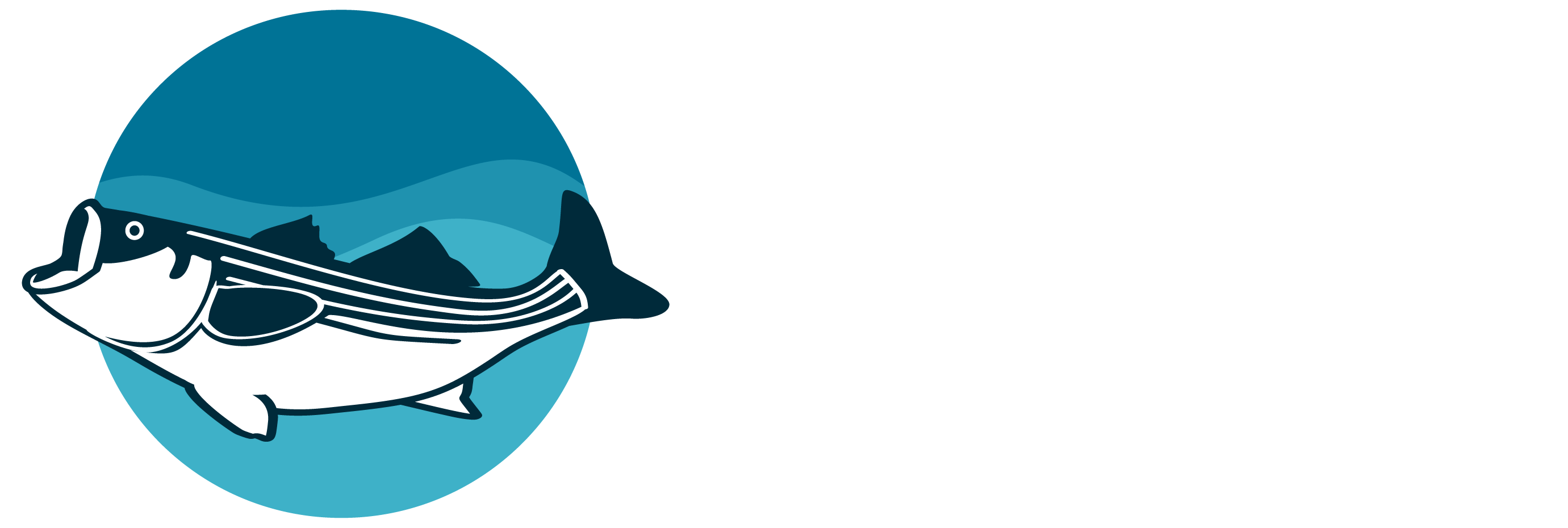Introduction to StripedBassMagic.org
The Striped Bass Magic at the Marine Biological Laboratory project was made possible by funding from the Mary E. Groff Charitable Trust and the Edwin Barbey Charitable Trust. Additional support has come from the Marine Biological Laboratory, Williams College and from many volunteers. All procedures relating to the Striped Bass have been approved by the MBL IACUC.
Here, you will learn about earth’s complex ecosystems with Woods Hole’s striped bass population as a focus. Follow the bass as they migrate over 500 miles, explore how they interact with other organisms in their ecosystem, see the technology used to research marine life, and learn how human activity affects the stripers and their food web! For classroom material, click on this “Curriculum” link.
This website is designed for you to explore the interrelatedness of organisms by focusing on the striped bass ecosystem. The migration and life cycles of the striped bass and their predators and prey provide a glimpse of the connection of seasonal changes in environmental parameters such as water temperature and day length with the movement of animals. One goal is to provide a forum for students to ask questions, to develop hypotheses and to devise ways to test the hypotheses.
The striped bass are an anadromous fish; 1) they live in salt water as adults, 2) they migrate into freshwater to reproduce and 3) they live part of their early life in freshwater before moving to saltwater. Other anadromous fishes include Altlantic salmon, Pacific salmon, smelt, sturgeon, lamprey, shad, herring, sea-run cutthroat and steelhead.
MANY OF THE LESSON PLANS DEVELOPED FOR THIS SITE UNDER “CURRICULUM” CAN BE ADAPTED TO THE STUDY OF OTHER ANADROMOUS FISHES.
En Español
Aquí, aprenderás sobre los ecosistemas complejos del planeta usando como foco la población del róbalo rayados (Morone saxatilis, también conocido como lubina ó lobina estriada) de Woods Hole, M.A. ¡Sigue al robalo mientras migran más de 500 millas, explora cómo interactúan con otros organismos en su ecosistema, observa la tecnología utilizada para investigar la vida marina y aprende cómo la actividad humana afecta a los róbalos y su red alimentaria! Para material de clase, haga clic en este enlace “Currculum”.
Esta página web está diseñada para que explores la interrelación de los organismos, centrándose en el ecosistema de róbalo rayado. La migración y los ciclos de vida del robalo rayado, sus depredadores y presas. Esto nos permite vislumbrar la conexión entre los cambios de estaciones, los parámetros ambientales como la temperatura del agua y la duración del día con el movimiento de los animales. Uno de nuestros objetivos es proporcionar un foro para que los estudiantes hagan preguntas, desarrollen hipótesis y diseñen formas de probar sus hipótesis.
El róbalo rayado es un pez anádromo; 1) viven en agua salada como adultos, 2) migran a aguas dulces para reproducirse y 3) viven parte de su vida temprana en agua dulce antes de trasladarse al agua salada. Otros peces anádromos incluyen el salmón del Atlántico, el salmón del Pacífico, el Pejerrey, el esturión, la lamprea, el sábalo, el arenque, la trucha degollada y la trucha arco-iris.
MUCHOS DE LOS PLANES DE LA LECCIÓN DESARROLLADOS PARA ESTE SITIO BAJO EL “CURRÍCULO” PUEDEN ADAPTARSE AL ESTUDIO DE OTROS PECES ANADROMOSOS.


